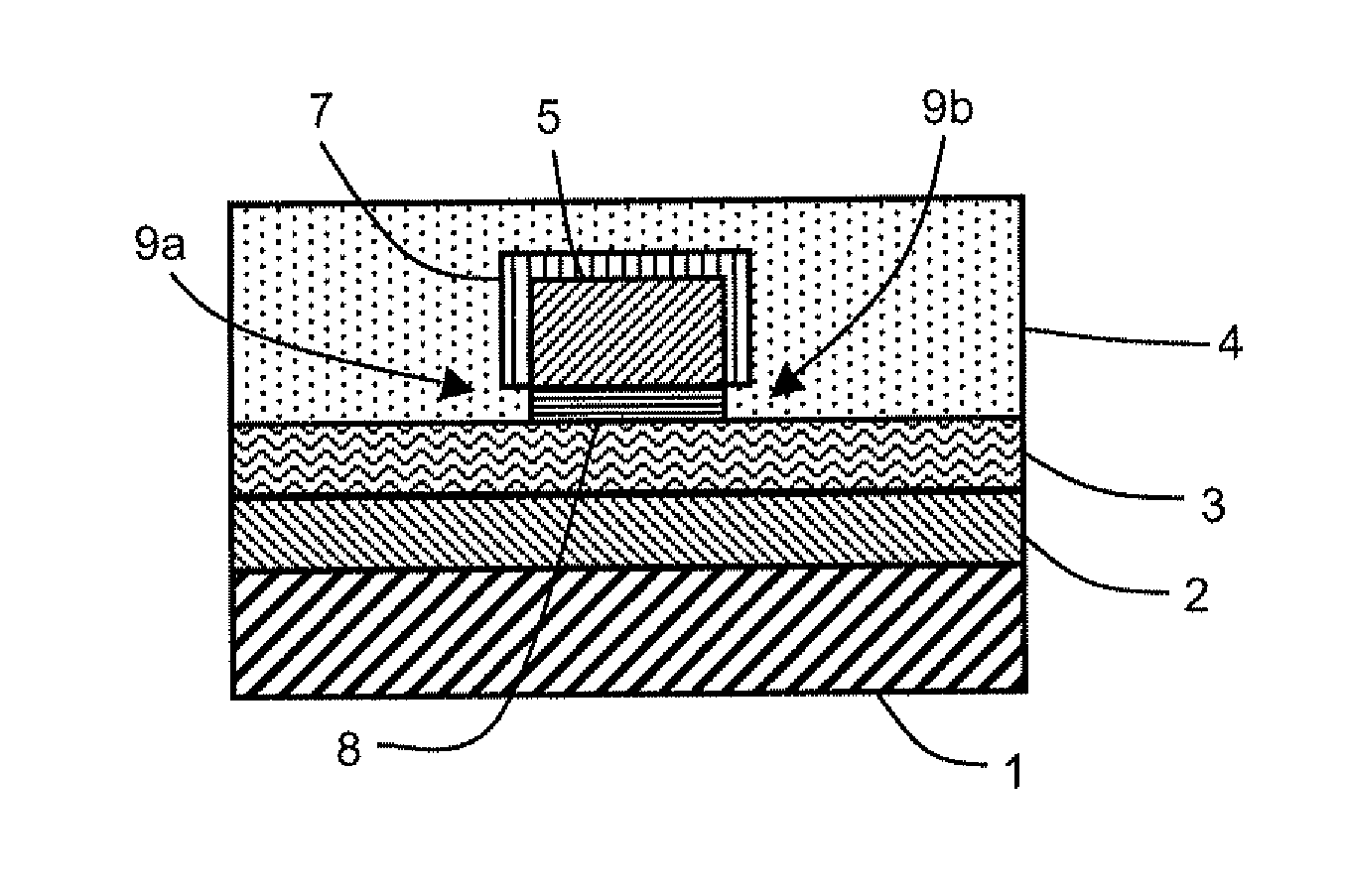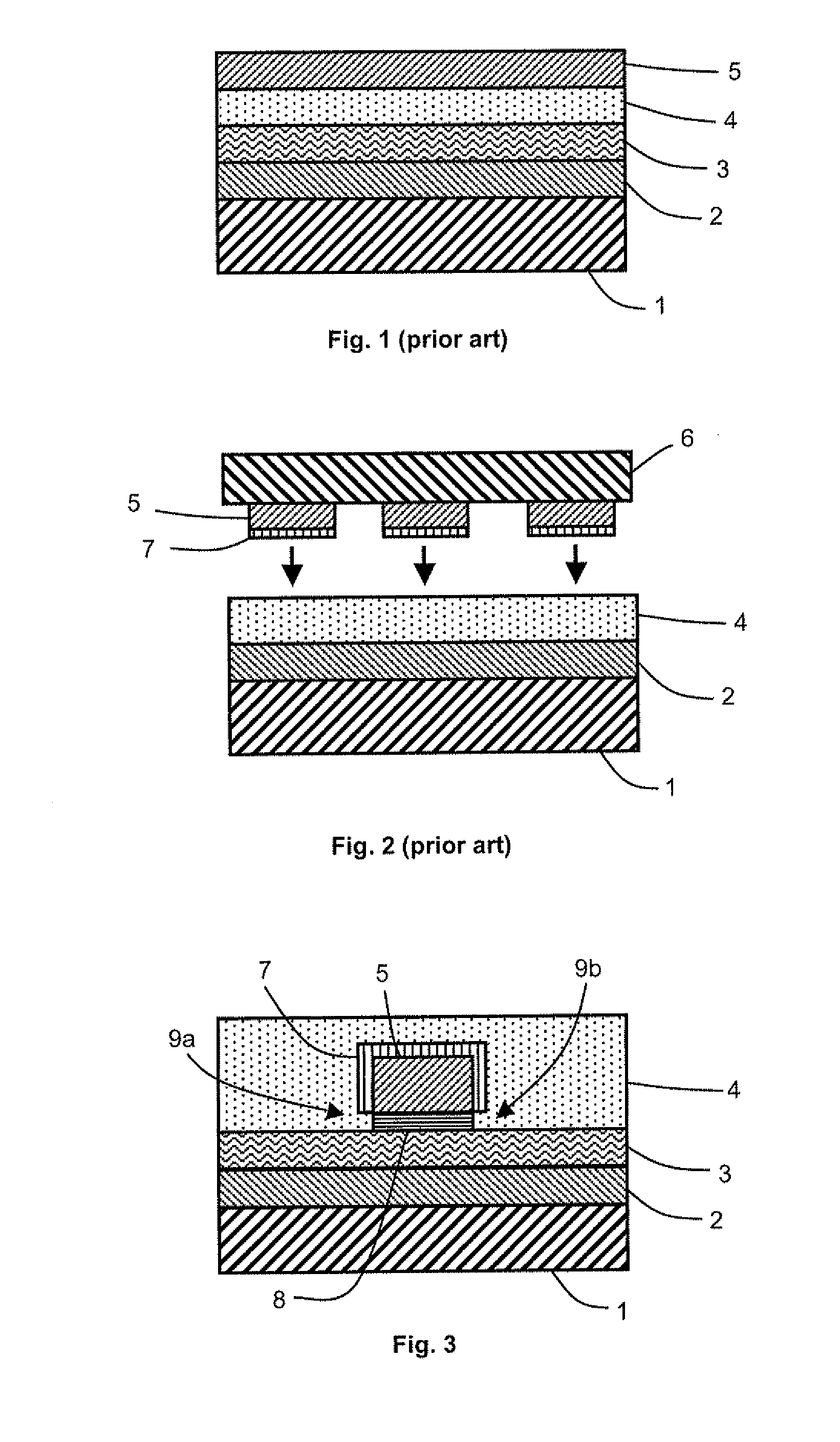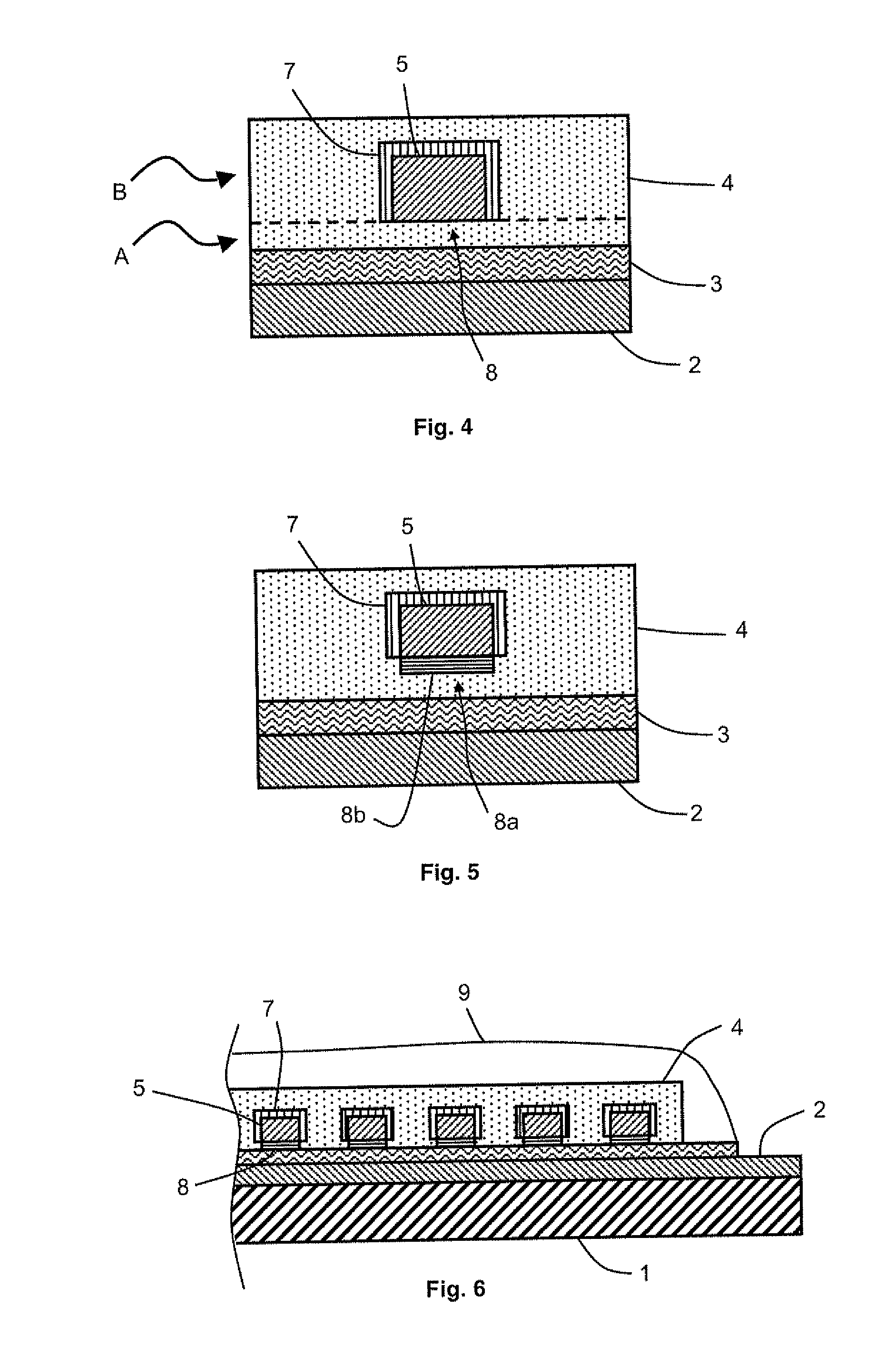Optoelectronic device having an embedded electrode
a technology of optoelectronic devices and embedded electrodes, which is applied in the direction of thermoelectric devices, sustainable manufacturing/processing, and final product manufacturing, etc., can solve the problems of difficult integration of a sam layer in a diode stack such as shown in fig. 1
- Summary
- Abstract
- Description
- Claims
- Application Information
AI Technical Summary
Benefits of technology
Problems solved by technology
Method used
Image
Examples
Embodiment Construction
[0031]FIG. 3 shows an embodiment of an optoelectronic device having an embedded electrode.
[0032]The device comprises a first electrode 2 arranged on a substrate 1. The first electrode is preferably provided with a charge injection and transport layer 3.
[0033]The device also comprises a second electrode 5 arranged in front of the first electrode. Electrode 5 has a compact shape, and is located at the center of the device. Electrode 5 is located above electrode 2 and substrate 1 and is insulated from electrode 2 by a separation area 8.
[0034]A layer 4 made from an organic semiconductor material is arranged in electric contact with electrode 2, via injection layer 3, for example.
[0035]As mentioned previously, given the nature of electrode 5, the contact between electrode 5 and organic material 4 should be established by insertion of a SAM layer 7. Since layer 7 cannot be arranged on the lower surface of electrode 5 for reliability reasons, it is arranged on the other surfaces of electro...
PUM
 Login to View More
Login to View More Abstract
Description
Claims
Application Information
 Login to View More
Login to View More - R&D
- Intellectual Property
- Life Sciences
- Materials
- Tech Scout
- Unparalleled Data Quality
- Higher Quality Content
- 60% Fewer Hallucinations
Browse by: Latest US Patents, China's latest patents, Technical Efficacy Thesaurus, Application Domain, Technology Topic, Popular Technical Reports.
© 2025 PatSnap. All rights reserved.Legal|Privacy policy|Modern Slavery Act Transparency Statement|Sitemap|About US| Contact US: help@patsnap.com



